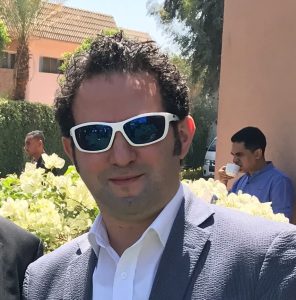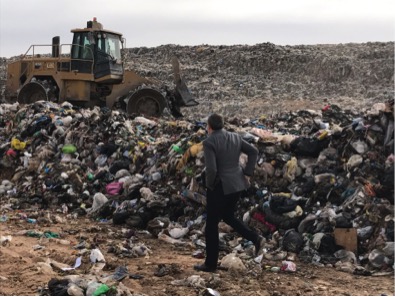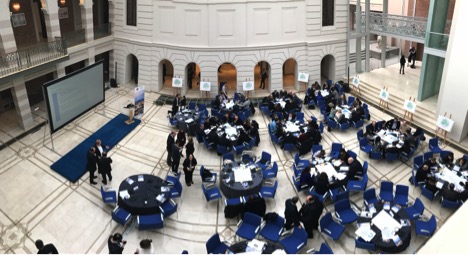
Samer Bagaeen AoU
All over the world, cities are facing a growing set of challenges – from a recurring frequency of one hundred year storms and unseasonal flooding, to mass migration, aging infrastructure, and racial and economic inequities that test the social fabric of communities. At the same time, these challenges present opportunities for transformation. And because cities have shown themselves to be incredible test beds for innovation, I am one of those that believes that the urban future and new urban solutions for wicked problems lie in cities and in an enlightened and forward looking city leadership.
Take Glasgow for example, one of 100 cities forming part of the network of resilient cities pioneered by the Rockefeller Foundation (www.100resilientcities.org). Glasgow has transformed itself from a centre of shipbuilding to a hub for community engagement and a focus on people. After all, people make Glasgow! Slightly further away is Amman, the capital of Jordan, which is facing huge pressures on its infrastructure given the impact of regional turbulence in the Middle East as refugees come into the city putting further stress on its water resources and infrastructure.

Site visit to the Amman landfill site, Amman Waste Systems Studio, December 2016
There is a lot of resilience work being done and much more to be done in both cities, and in each and every one of the cities in the 100 Resilient Cities Network. The organization, 100RC, helps cities build resilience amid social, economic and physical challenges that are ever-increasing. This resilience allows them to not only adapt and survive but to grow stronger as they do so. From Accra to Amman, from Bangkok to Bristol, from Norfolk USA to Nairobi, communities are successfully paving the way for a more resilient future. We are also seeing the market respond, with a growing demand for products and services that cities need as they build resilience.
But before I dive deeper into 100RC, let us define ‘resilience’ first. As an organization, 100RC has a dynamic view of resilience that emphasizes the interrelationships of the entire urban ecosystem. We therefore define urban resilience as the capacity of individuals, communities, institutions, businesses, and systems within a city to survive, adapt, and grow, no matter what kinds of chronic stresses and acute shocks they experience. This is different from a more traditional view of resilience as being fundamentally concerned with disasters and risk reduction. But we’re not just talking about the ability to bounce back from the sudden disasters – acute shocks such as fires, earthquakes, and floods – that are commonly associated with the word. We’re also focused on the long-term, slow-burn disasters that weaken a city over time. These stresses – such as poverty, endemic violence, and an inadequate transportation system – are persistent and no less pernicious and exacerbate the sudden disasters when those do occur.

Our Agenda setting workshop in Tbilisi, January 2017
To help cities grapple with these challenges, shocks and stresses, we provide four types of support to the 100 cities in our global network.
The first is funding to hire a Chief Resilience Officer, a senior official within the mayor’s office whose job it is to coordinate resilience-building efforts across government departments, and also to pull in the private sector. Once a city has a CRO in place, the CRO’s first major undertaking is to develop an action-oriented Resilience Strategy that includes specific, implementable initiatives that will make a city better today and tomorrow. The resources and technical support 100RC offers to guide the crafting of the strategy is the second of our four major offerings. This includes 100RC staff support and a strategy partner to help guide the city through this part of the engagement. To deliver these strategies, we work with Arup, Aecom, Buro Happold in Europe and the Middle East and with many others in our cities around the world. The Resilience Strategy is the product of a 9 to 12-month process in which a city closely examines the threats it faces, its existing ability to address those threats and, critically, what needs to be done to bridge the gap. To help implement the strategies, we connect cities to a dedicated platform of partners in resilience planning, including international institutions such as the World Bank, the European Bank for Reconstruction and Development and many others, private companies, NGOs and academic institutions. This is the third of our four core offerings. As cities develop their strategies, gain a deeper understanding of their shocks and stresses, and begin to form solutions, they do not do so in a vacuum. That’s why our fourth offering is membership in our peer-to-peer network, which allows CROs and their teams to proactively share best practices with other cities across the globe. The peer-to-peer network, the platform of partners, the development of a Resilience Strategy and the hiring of a CRO are the four offerings that together form the beating heart of 100 Resilient Cities.
Prof Samer Bagaeen AoU
Would welcome your thoughts on rural population decline and urban sprawl on productive soils. Rural areas face population decline and the same climate change impacts as well as environmental quality issues. How will these large urban populations feed themselves? What of comparative advantage vs self sufficiency, large scale production vs household scale, traditional high input vs new techniques? What rural- urban relationship do we need to develop to support this urban resilience? Can urban areas feed themselves and will it be a necessity that they find a way to so?